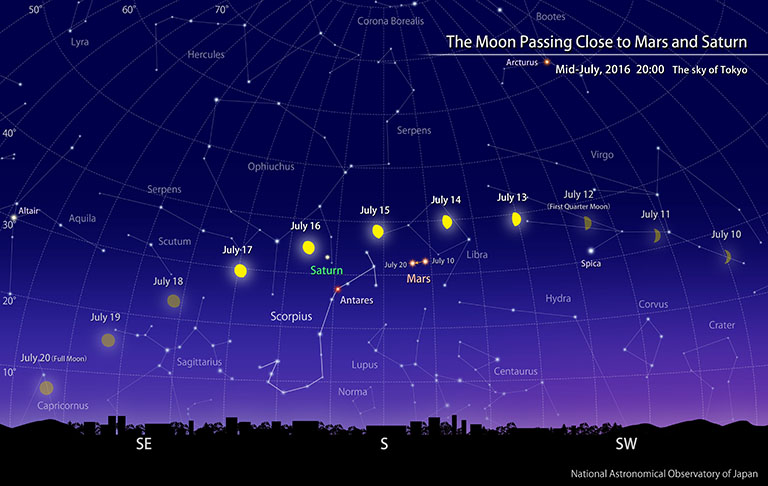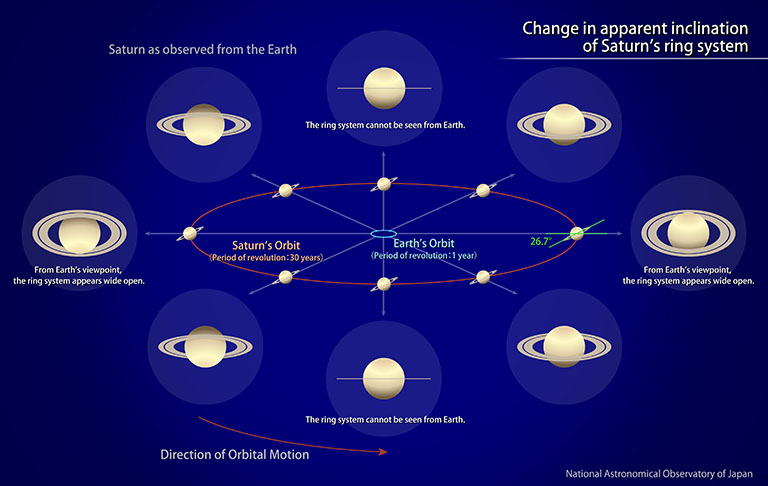Astronomical Events Information | 2016 | July
The Moon Passing Close to Mars and Saturn
A Chance to Observe Mars and Saturn

It is still a good time to observe Mars, which had its closest approach with the Earth at the end of May. Mars is visible in the southern sky after sunset. Saturn can be seen a little to the east of Mars. From July 14 to 16 we can observe the spectacle of the Moon passing close to Mars and Saturn.
A little below Saturn, 1st-magnitude Antares shines bright red in the constellation Scorpio. As Mars moves through the starry sky from west to east, from July to August it approaches Antares little by little. Antares means “One which opposes Mars (Anti- Ares).” Please enjoy the sight of Mars and Antares competing in redness as they move closer together.
We also get a chance to observe Saturn, which passed opposition on June 3. Saturn’s ring system can be observed even by a small telescope. This year, we can observe the sight of Saturn with the ring system opened wide. Saturn is tilted by 26.7 degrees with respect to the orbital plane and it takes about 30 years for Saturn to orbit around the Sun. So the inclination of Saturn’s ring system, as seen from the Earth, goes through a cycle of “Edge On --> Maximum Northern Inclination --> Edge On --> Maximum Southern Inclination --> Edge On” approximately once every 30 years. As a result, Saturn’s outline appears to change with a period equal to half of that, or approximately 15 years. People who don’t have a telescope might take this opportunity to participate in stargazing at a public observatory or science museum, etc.

Source: Ephemeris Computation Office, NAOJ
You can look up the rising and setting times for the Sun and the Moon for various locations, and the phases of the Moon in the “Koyomi Station” of the NAOJ Ephemeris Computation Office.